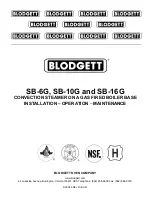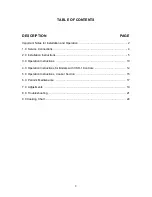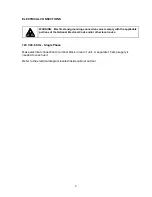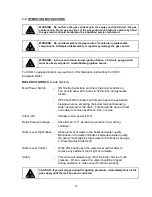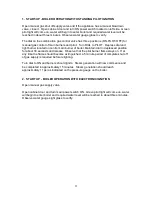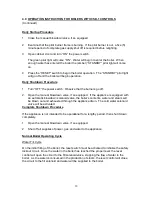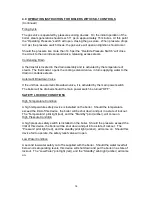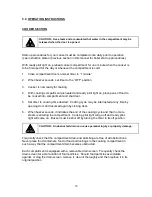
8
GAS CONNECTION
1. The data plate on the cabinet door of the boiler indicates the type of gas your unit is
equipped to burn. DO NOT connect to any other gas type.
Keep the appliance area free and clear from combustible substances. Do not
obstruct the flow of combustion and ventilation air.
2.
A 3/4" NPT line is provided at the rear for the connection. Each boiler is equipped
with an internal pressure regulator which is set at 3.5" W.C. manifold pressure for
natural gas or 10.5" W.C. for L.P. gas. Use the 1/8" pipe tap on the burner manifold
for checking pressure.
An adequate gas supply is necessary. Undersized or low pressure lines will restrict the
volume of gas required for satisfactory performance. A steady supply pressure, between
7" W.C. and 14" W.C. for natural gas and 11" W.C. and 14" W.C. for propane gas is
recommended. With all units operating simultaneously, the manifold pressure on all
units should not show any appreciable drop. Fluctuations of more than 25% on natural
gas, and 10% on propane gas, will create pilot problems and affect burner operating
characteristics. Contact your gas company for correct supply line sizes.
Purge the supply line to clean out any dust, dirt, or foreign matter before connecting the
line to the unit.
CAUTION: The pipe thread compound used when installing
pipes must be a type that is resistant to the action of liquified
petroleum or propane gases.
Codes require that a gas shut-off valve be installed in the gas line prior to the steamer.
Make sure the pipes are clean and free of obstructions, dirt, and piping compound.
WARNING: Prior to start-up, check all joints in the gas supply
line for leaks. Use soap and water solution. Do not use an
open flame.
NOTICE: If applicable, the vent line from the gas appliance pressure regulator shall be
installed to the outdoors in accordance with local codes or, in the absence of local
codes, with the
National Fuel Gas Code, ANSI Z223.1/NFPA 54,
or the
Natural Gas and
Propane Installation Code CSA B149.1
, as applicable.

